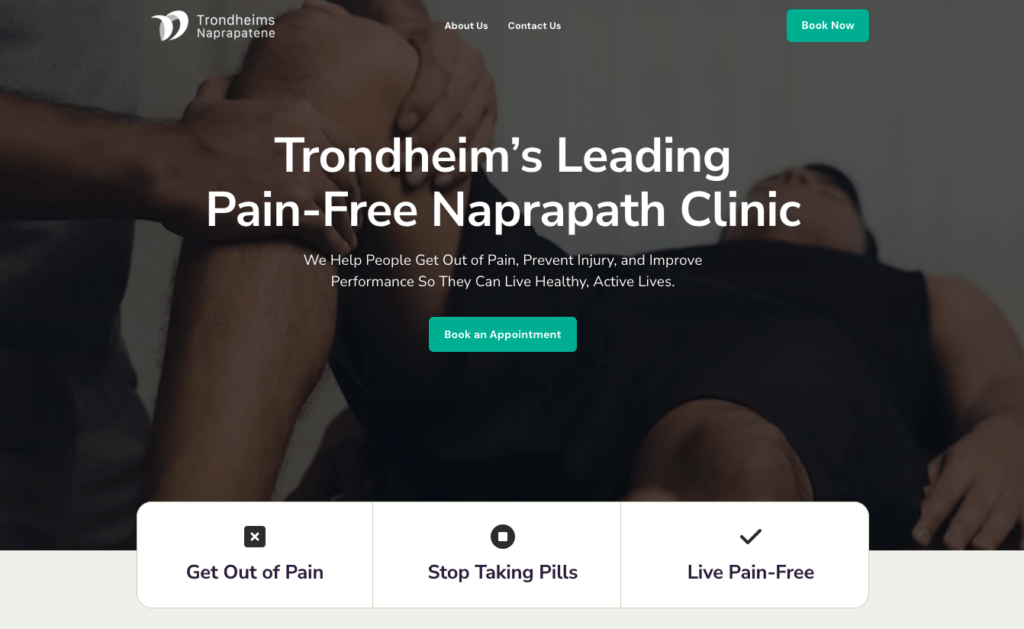Welcome to our in-depth guide on how to start a fitness business. This is where theory meets practicality amidst the chaotic journey of building a fitness business.
This guide is the companion I wish I had during my initial days as a personal trainer—revealing insights that personal training courses just don’t cover, and often miss.
If you’ve read our previous chapter, “The Five Stages of Fitness Business Growth”, you’ll recall the five stages of fitness business growth that compartmentalized our journey into five pivotal stages:
- Stage I: White Belt < $2,500/month
- Stage II: Blue Belt < $5,000/month
- Stage III: Purple Belt < $15,000/month
- Stage IV: Brown Belt < $25,000/month
- Stage V: Black Belt < $50,000/month
In this chapter, we’ll dive deep into actionable steps suitable for White Belts, and more advanced businesses who haven’t got the basics in place setting them up to scale.
At Stage I: White Belt, we’re embracing a world of possibilities, it’s a blank canvas. However, we need to lay some groundwork to set us up for the choppy waters ahead.

From initial training, digital launch, client management, and key marketing activities, we’ll explore every facet, enabling you to consistently earn over $2,500/month, propelling you out of White Belt and into Blue Belt as fast as possible.
Prioritizing practicality, this guide ensures your raft, afloat on the white water rapids of the fitness business is robust enough to navigate you through early challenges and prepare you for the wild rapids you’ll encounter later in your journey.
This guide is not just about keeping your fitness business afloat; it’s about teaching you to navigate these wild waters of fitness business ownership skillfully, ensuring a successful career and a profound impact on your clients.
Table of Contents
Training and Qualifications: Expertise Without Breaking the Bank
Starting a fitness business shouldn’t immediately plunge you into debt. While the fitness industry opens its doors wide for newcomers, strategically choosing where and how to invest in your training and qualifications becomes pivotal.
The allure of achieving advanced certifications, like a Level 4, might look appealing, promising a perceived level of expertise in the industry. But your clients, those individuals whose lives you’ll be transforming, will rarely, if ever, inquire about your certifications.
It’s not about collecting accolades for display, but about equipping yourself with practical skills and knowledge that directly impact your clients and business.
What genuinely matters – practical training that’s going to directly influence your day-to-day interactions with clients and steer your business forward.
So, after achieving your very first personal training qualification we’d recommend the following three courses that cover most areas trainers need help with; Practical training advice, movement assessments, and nutrition.
We’d suggest:
- Mike Boyle’s Certified Functional Strength Coach Certification
- FMS Level 1, by the team at Functional Movement Systems
- Precision Nutrition’s Level 1 Nutrition Certification.
These courses are not just badges of honor but are practical toolkits that arm you with tangible skills and applicable knowledge, propelling you to deliver results that matter to your clientele and consequently, your growing business.
We’d also suggest our Hybrid Coaching Program to put it all together, but we’ll save that for another time. We’ll dive deeper into our Hybrid Coaching Program in a future segment, but for now, we want to provide an unbiased overview.

Channel Your Energy Towards Actions that Generate Revenue
I get it, at the start of your career, you’re excited. You want to learn about everything and you feel the allure of collecting certifications, thinking they’ll be a magnet for clients.
However, this common misstep not only drains your resources but also diverts your focus from a paramount initial target: acquiring your first 10 clients.
While continual learning remains integral to your development as a fitness professional, it’s essential to judiciously manage your investments in further education.
Initially, let the courses you’ve taken and the knowledge you’ve amassed fuel your first interactions with clients.
Drive your business forward by pivoting your focus towards actions that generate revenue and lay a robust financial foundation for your fitness business.
The key? Balance.
Once you’ve established a steady stream of income and have maneuvered through the initial challenges of client acquisition and retention, then – and only then – should you contemplate furthering your education.
This ensures that your pursuit of additional certifications or courses is a strategic investment, not a financial strain or a premature quest for industry recognition.
In the White Belt phase, the focus isn’t on parading numerous certifications, but rather on strategically amassing and applying practical knowledge, establishing a stable financial footing, and directing your initial investments toward actions that directly grow your client base and revenue.
Remember, as you acquire your first 10 clients, it’s not the quantity of your certifications, but the quality and applicability of your knowledge and skills that position your business.
Having highlighted the importance of strategic learning, let’s now shift our focus to another crucial aspect – Business Systems

Business Systems: Solidifying Your Professional Framework
With your training and certifications now under your belt, it’s time to pivot from acquiring knowledge to applying it, transitioning from theoretical frameworks to the tangible, practical building of your fitness business.
Laying a strong, strategic foundation in this White Belt stage is absolutely pivotal to long-term survival. Your business acumen and strategic planning will become the sturdy ground upon which your practical knowledge will shine, lighting a path not just for your business, but for every life you’ll touch and transform through your knowledge.
Step 1: Build a Website
In today’s crowded digital landscape, your website stands for your digital handshake—a pivotal, yet often underestimated, first encounter with prospective clients.
Despite its vital role, astonishingly, fitness professionals either neglect this component or execute it terribly. This oversight signals that, while the competition may be abundant, the website space for personal trainers and fit pros is not, meaning it’s ripe for you to take advantage.
Creating a compelling, professional website gives you a significant advantage, and you gain a definitive edge. Your website isn’t merely a platform—it’s the embodiment of your ethos, reflecting your expertise and the transformative experiences you offer to your clientele.
It’s the first place clients will go to learn more about you after a recommendation, or something they’ve seen on social media.
You must establish your unique digital identity with a clear domain name, a professional email (avoid generic domains like @gmail), and efficient communication tools like MailChimp.
But it’s more than just owning an aesthetically pleasing website. By building your website as soon as possible, you magnify your domain authority from the onset, becoming a key player in Google’s coveted ranking algorithm.
It’s a strategy that certifies your digital space as a position of reliability, professionalism, and ease of interaction, mirroring the qualities of your physical services.
When meticulously crafted and thoughtfully created, your website transforms from a simple presentation to a potent magnet, continuously attracting clients and ensuring you aren’t chasing after them; they find you, trust you, and amidst the bustling, chaotic digital fitness arena, choose you.
Your website needs to be that firm, unyielding handshake that doesn’t merely greet but beckons prospective clients, positioning you as their chosen fitness professional on their fitness journey.
Key Takeaways:
- Invest in a Professional Website: Make a memorable first impression.
- Secure a Memorable Domain Name: Stand out from the crowd.
- Adopt a Professional Email Address: Enhance your credibility.
- Choose a Robust Email Service: Efficiently communicate with clients and prospects.

Step 2: Smart Social Media Use
Amidst the sprawling digital landscape that is social media, the secret sauce isn’t to cast a wide, indiscriminate net but to create a path of impactful, laser-focused visibility.
While the urge to post everywhere on social media might compel you, consider this: What value is visibility if it doesn’t translate into connection, community, and ultimately, clientele?
While securing your business handles across all platforms is crucial to safeguarding your brand, it’s important to remember that a strong, consistent, and engaged presence on one platform invariably trumps a scattered and inconsistent presence across multiple channels.
So, how do you navigate these digital waters without becoming lost in the vast ocean of online noise?
Choose Your Social Platform
Identify and focus on the platform most frequented by your target audience. It’s not about your message but also about who is tuning in. Understand their challenges and aspirations to craft content that truly resonates with their needs. This shapes a content strategy that doesn’t just speak to them but echoes their inner narratives.
Weave a Narrative
Your content needs to be more than information; it becomes a narrative where their goals and your expertise come together. Here, you transition from a service to a journey companion, guiding, motivating, and cheering every step along their path.
Cultivate a Community
Within this digital platform, it isn’t only about fitness. It should never be. It’s about nurturing a community, a sanctuary where expertise and support intertwin. It’s not just about likes and followers, but creating loyal, passionate followers for your brand and services.
Engage and Evolve
Engage deeply with your audience. Hear their stories, understand their problems, and celebrate their wins. Just bear in mind that your social media transcends a marketing tool. It becomes a realm of connection, shared journeys, and conveying your professional persona.
Key Takeaways:
- Secure Your Brand: Consistency is key; ensure your brand is represented uniformly.
- Choose Wisely: Prioritize platforms that align with your audience’s preferences.
- Craft Your Story: Connect deeply by creating relatable and inspiring content.
- Build a Community: Engage actively to transform followers into active community members.
- Professional Persona: Always prioritize your expertise and credibility over mere popularity.
Through these strategies, your social media becomes not just into a tool but a refuge, a space where professional expertise and personal journeys interweave, crafting not merely a clientele but a community, steadfastly rooted in shared aspirations, tales, and triumphs.

Step 3: Craft Your Client Avatar
In the fitness business, knowing your client is paramount. A ‘client avatar’ isn’t just a business term; it’s a comprehensive representation of your ideal client. Specificity will become your strongest ally.
The oft-repeated adage, “If you chase two rabbits, you will not catch either one,” underscores a pivotal truth in the need for client avatars.
Crafting your client avatar isn’t a mere administrative step; it’s an empathetic journey into the hearts and lives of those you aim to serve, ensuring your services are not merely seen but deeply felt and embraced.
The allure to appeal to everyone, to cast a wide net in hopes of capturing a wider clientele, seems intuitively beneficial. But alas, this strategy dilutes your message and expertise.
Consider our coaching client, Simon Bradbrook, who crystallized his focus on busy parents aged 40 and above. This specificity doesn’t just define his target; it intricately weaves his services, and his personality into the very fabric of their daily lives, challenges, and aspirations, making his offerings not just suitable but deeply resonant.
When trying to build out your client avatar, here’s a few things you need to consider when doing so:
Authentic Messaging
Your avatar should genuinely represent real individuals with dreams, struggles, and aspirations. Dive deep into their worlds, ensuring your services become a beacon of change and positivity in their tangible realities.
Embrace Their Challenges
Understand their daily responsibilities, professional struggles, and self-care needs. Your services and communication should embrace and provide solutions for the unique challenges your avatar faces.
Mirroring Their World in Yours
Share your story, who you are, what you do, what you like doing, and the things you love to do away from the gym. If you’re a Star Wars geek, show it. Like, attract like. Make sure this comes across.
Relatability
In a sea of generic fitness offerings, your deeply rooted understanding of your client avatar allows your business to shine as a beacon of relatability, authenticity, and tailored solutions.
Key Takeaways
- Intimate Understanding: Know your clients beyond the surface level, embracing their worlds, dreams, and challenges in your offerings.
- Personalized Strategy: Ensure every business move, communication, and offering echoes the unique needs and aspirations of your client avatar.
- Empathy Meets Business: Transition your empathetic understanding into tangible, intelligent, and emotionally resonant strategies and offerings.
- Make It Front and Center: Call out your client avatar, front and center of everything that you do, and most importantly the hero section of your website’s main page.
- Operational Strategy: A clear client avatar helps streamline your marketing efforts, content creation, and service customization, ensuring your business moves align perfectly with your target audience’s preferences and needs.
Your client avatar needs to be at the heart of your business, pumping life, relevance, and resonance into everything that you do.
It ensures that you’re not like any other business but one that thrives, touches lives, fosters real change, and carves out a space where your expertise meets and changes the lives of your clientele.
Client avatars will change over time, and that’s okay, however, if you want to stand out, actively attract the people you want to work with, become a magnet to them, and repel the ones you don’t.
Step 4: Pricing and Packaging
Most personal trainers don’t have a system of pricing and packaging. They simply copy what the trainer next to them charges and hope for the best. That is a recipe for disaster on so many different levels.

Your pricing must reflect the tangible and intrinsic value you extend to your clients, and your prices need to transparently communicate your brand’s perceived value in the market.
Cheap attracts cheap. If that’s you, then that’s okay, but if you offer a premium service for a discounted price, this will never work. You need to adopt a stance of clear and honest pricing that is targeted at the right clientele.
This will play a pivotal role in safeguarding trust and facilitating a smooth decision-making journey for your clients. This clarity enables them to seamlessly discern, relate to, and opt for your offerings without a moment of hesitancy or confusion.
A Framework to Price and Package Your Services
Pricing and packaging is a hot topic, and confusing for most people starting out in fitness industry. It can often present a winding path of complexities. So, let’s explore the exact pricing structure we use currently at Strength Matters and save you all the time mistakes we made along the way getting here.
We believe in Hybrid Training. This is our exact pricing model.
When it comes to pricing, we recommend having two fees:
- A monthly rate for the coaching program
- A separate fee for each in-person session
Always think of the in-person sessions as an upsell. It’s like the McDonald’s “Would you like fries with that?”
You start by determining your monthly pricing rate for online coaching. I recommend combining training, lifestyle, and nutrition in one package.
If clients choose not to take you up on all the options, the onus is on them. We find not everyone wants nutrition coaching, but it’s on offer for when they’re ready or willing to take it on board.
Pricing varies here, but what we see is that the most successful coaches charge between $199 and $499 per month for this option.
At Strength Matters, we have found $299 to be our optimal spot in terms of client longevity and lifetime value, but only you can decide what works best for you as it depends on the market you’re going after.
Just remember, there’s no money in being the cheapest trainer in town, and it’s a race to the bottom if you go below these suggested prices.
In terms of your in-person sessions, this is your bolt-on package if people decide they want to work in person with you. The best way to think of this is in monthly offerings. The way we find works best at Strength Matters are the following three options:
- Once per week
- Twice per week
- Three times per week
Most people choose the once-per-week option when they opt for hybrid coaching, with the rest going them going for the twice –per week alternative.
Rarely do we get people choosing three times a week because time doesn’t allow for it. What it does do is offset the pricing of the other two options making them highly attractive offerings.
To determine the monthly rate, start with the number you charge for each in-person session. Let’s just say it’s $100, to make things simple. Once per week equates to four sessions a month; twice per week, eight sessions; and thrice per week, 12 sessions.
The once-per-week option is easy to calculate: We don’t discount and each session costs $100. As they move up in options, it works out that we provide “free” sessions.
We never discount. The incentive is to get x number of free sessions so, for twice per week, they get two free sessions on us per month, and, for three times per week, that’s three free sessions a month.
Based on a $100 hourly rate for a session, it would look like this:
- Once per week = 4 sessions @ $400/month
- Twice per week = 8 sessions @ $800/month – 2 sessions = $600/month
- Three per week = 12 sessions @ $1200/month – 3 sessions = $900/month
Therefore, the formula for pricing and the formula we use at Strength Matters is:
Online Base Cost + In-Person Cost = Monthly Client Total
This also comes with a minimum three-month commitment and a full 30-day money-back guarantee for the online coaching component (not the in-person delivery). We back the quality of our training and services and put our money where our mouths are.
Assuming a new client decides to work with us both in person and online and chooses the twice-per-week in-person hybrid coaching option, it would look like this:
$299 + $600 = $899/month
There is one other option we provide, but we do try to avoid it unless it becomes appropriate, and that is block session bookings. Sometimes people just need 1 to 5 sessions to help with form or technique.
In these circumstances, we offer 5, 10, and 20-session packages in addition to the online coaching. We build these out in a similar fashion to the monthly in-person pricing options, which looks like this (assuming you charge $100 per session):
- 5 sessions @ $100 = $500
- 10 sessions @$100 – 2 sessions = $800
- 20 sessions @100 – 4 sessions = $1600
This is another great option to help with cash flow but, overall, the key is to be flexible and adjust your pricing strategy based on the individual needs and demands of your clients. Just some food for thought and an insight into how we deliver our training and package our services at Strength Matters.
Key Takeaways:
- Harmonizing Value and Price:
- Your pricing model should be a delicate blend of reflecting the tangible and intrinsic value you deliver and maintaining an appeal that attracts potential clients without deterring them due to cost.
- Your pricing strategy should also serve as a transparent messenger of your brand’s perceived value in the market.
- Inclusive and Comprehensive Packages:
- Combining various aspects of your service (training, lifestyle, and nutrition) into one comprehensive package allows clients the autonomy to engage with the aspects that resonate with them, with a pricing sweet spot often found around $299 per month.
- Structuring In-Person Session Offerings:
- Offering structured options for in-person sessions and providing incentives, such as “free” sessions in higher-tier packages, can enhance perceived value and allure.
- The formula for structuring pricing can be visualized as Online Base Cost + In-Person Cost = Monthly Client Total, which allows for transparent and straightforward understanding for the client.
- Flexible Alternatives and Adaptability:
- Providing alternative options, such as block session bookings, caters to those clients who seek flexibility or sporadic assistance.
- It’s crucial to be adaptable and mold your pricing strategy to the nuanced needs and demands of your clients.
Striking a balance by integrating various service components into one package and enabling clients to engage per their comfort and need fortifies a client-centric approach.
Furthermore, structuring in-person sessions, offering value-added incentives, and maintaining a stance of flexible adaptability assures that your service remains inclusive, accessible, and notably client-aligned.
Thus, through strategic simplicity, a well-structured and thoughtful pricing strategy unfolds, underpinning not just the economic health of your business but also establishing a sturdy, value-driven relationship with your clientele.
This, in the realms of hybrid personal training, translates into a sustainable business model where value-driven client relationships thrive amid well-structured economic viability.
Marketing Techniques for White Belts
Beginning your marketing journey as a White Belt demands wise choices, especially when it comes to laying the bedrock for your marketing strategies. With a plethora of advice available, many experts may push expensive Facebook campaigns on you. That to us is advanced marketing techniques.
We believe that before advancing to “purple belt” techniques, it’s vital to grasp the “white belt” basics.
We believe it’s about laying a path that requires minimal financial investment, yet yields considerable results, akin to laying a strong foundation for a building. Like a skyscraper’s need for a solid foundation to withstand storms, your business demands a sturdy marketing base to outshine the competition.
By focusing on organic, almost cost-free strategies, you ensure that this foundation is not just sturdy, but also sustainable. Remember, in the world of marketing, it’s not always about how much you spend, but rather how wisely you invest.
Your primary focus? Google. Harness its immense power through organic growth and dominate the Google Map Pack.

Step 1: Leveraging Organic Growth, Google Maps and SEO:
The organic approach, though gradual, ensures resilience and longevity. This strategic approach to growth cultivates an authentic brand presence, establishing a foundation of genuine value, and trustworthiness, and in the long run will guarantee you an extra one to five clients each month like clockwork.
Here’s what you need to do:
Prerequisite: The Website:
Before diving deep into the nuances of organic growth and SEO, it’s imperative to highlight the cornerstone of your online presence: your website. As discussed earlier, a well-structured website serves as your digital storefront. It’s not just about aesthetics; it’s the primary platform where potential clients learn about your services, ethos, and brand voice.
(If you want help with this, please contact us here)
Setting Up a Google Business Page:
Being locally visible starts with having a Google Business Page. This free tool allows businesses to manage their online presence across Google, including Search and Maps.
By verifying and editing your business information, you help customers find you and tell them your business story. The Google Business Page is the stepping stone to the Google Map Pack—the coveted trio of local businesses spotlighted on Google Maps. And here’s where reviews come into play.
The Power of Google Reviews
Google Reviews are the currency of credibility in today’s digital age. A positive review amplifies your brand’s reliability manifold. By fostering an environment where satisfied clients are encouraged to share their experiences, you’re building an online vault of authentic testimonials.
But there’s another layer of potency to these reviews—they directly influence your SEO. Reviews bolster your website’s search engine ranking, making it more likely for potential clients to find you.
The magic numbers to aim for? Initially, it’s about hitting that first landmark of 25 reviews as swiftly as possible. But don’t stop there. The goal is to gather 100 reviews, amplifying your credibility and boosting your SEO metrics.
It’s these markers that signify intent to Google telling them that you’re a legitimate business to push your rankings higher.
Mastering Local SEO and Google Map Pack Appearance
Remember, when someone in your vicinity searches for the services you offer, your goal is to ensure your business stands front and center. Achieving a spot in the Google Map Pack ensures this heightened visibility.
Understanding Differentiating Search Intent
The visibility on Google cannot be stressed enough. Here’s why: Different digital platforms cater to various user intentions. When individuals use search engines, they’re usually on a mission – they have specific needs, like searching for “personal training near me.”
In contrast, social media primarily serves as a platform for leisure and entertainment. The key difference? On Google, you’re reaching users who aren’t just casually browsing – they have a clear, actionable intent.
Thus, by optimizing your visibility on Google, you’re tapping into a demographic that’s not merely curious but is genuinely primed to engage.
Step 2: Harnessing Referrals
This is all about trust through association. The weight of a personal recommendation, especially in local businesses, is gold. When services are recommended by a known and trusted individual, their credibility and trust quotient automatically skyrocket.

Engaging Personal Networks
Every individual in your circle, whether family, friends, or acquaintances, can be a potential advocate for your business. Their personal relationship with you not only helps spread the word but also adds authenticity and trust to their recommendations. It’s not just about spreading the word, but having that word carry genuine weight because of their trust in you.
Building Relationships with Health Practitioners:
Another strategic avenue is to foster ties with fellow health practitioners nearby, such as physical therapists and chiropractors. Authentic engagement is key.
Instead of a simple introduction, consider experiencing their services first-hand. Booking a session, even without an immediate need, is a gesture of respect and acknowledgment. Such initiatives pave the way for genuine collaboration and trust-building.
It’s a gesture that speaks volumes about your integrity and genuine interest in collaborative growth. Over time, this can evolve into a mutually beneficial referral system. Yet, it’s crucial to approach this with patience.
Building trust is a journey, not a one-off event. It’s about fostering a relationship where they not only understand what you offer but feel confident in recommending their patients to you.
Establishing a Rewarding Referral Program
While organic word-of-mouth has its charm, spicing it up with incentives can turbocharge your referrals. Design a program where both the person referring and the one being referred feel the added value. This dual-benefit system enhances your brand’s reach while recognizing and celebrating loyalty.
It’s not merely about offering a discount or a freebie; it’s about creating a system where both parties—the referrer and the referee—experience added value. It’s a symbiotic approach that amplifies the spread of your brand while rewarding loyalty and advocacy.
For instance, at Strength Matters, our referral program has a tiered reward system. The first referral earns a handwritten thank-you note coupled with a local coffee shop voucher. A second referral? They get a limited-edition Strength Matters mug. Of course, the reward should align with the client’s preferences; it’s a simple gesture but one that speaks volumes.
Step 3: Authentic Community Engagement and Strategic Partnerships
Strengthening your brand and expanding its influence often lies in the genuine relationships you build and the communities you become part of. True authenticity and the bond of shared values can work wonders for a business.
Strategic Collaborations:
By allying with businesses or individuals whose services complement yours, you open doors to mutual growth and benefits. For example, a personal trainer could join forces with a nearby nutritionist. Instead of just offering package deals, they could collaborate to host wellness seminars, blending both fitness and nutrition advice, and drawing in clientele from both fields.
Immersion in the Community:
Genuine immersion in a particular community can redefine your business approach. Take, for instance, my involvement with “Cricket Matters.” Here, I’m not merely a service provider but an integral member of the Welsh cricket community — from my roles in coaching at Cardiff to my contributions to the Wales Over 40’s and 50’s teams.
This genuine involvement sparks organic discussions, establishes my authority, and bolsters my connection with fellow members. It’s not just about the services you offer; it’s about truly understanding, sharing, and being a part of their journey.
Actionable Insight:
Choose a community or niche where your passion and expertise align. Engage deeply, be active, and position yourself as a trusted figure. Being a genuine part of a community can lead to organic referrals, as members naturally gravitate towards those they trust and relate to.
Active Participation in Local Initiatives:
Engaging in local events or supporting causes dear to the community’s heart can significantly boost your brand’s resonance. Whether it’s organizing a charity fitness event, volunteering at local sports events, or contributing to community welfare activities, such initiatives do more than just promote your brand. They showcase your commitment and genuine care for the community you’re part of.
The overarching theme? Cultivate real connections, share mutual experiences, and emphasize mutual growth. These elements, combined, can foster trust, leading to a flourishing business.
This foundation of your marketing, though seemingly basic, is essential. These strategies provide the bedrock upon which all subsequent marketing tactics can be built. They create a resilient, evergreen approach that continues to prove its efficacy, even when combined with paid advertising down the line.
Laying the Evergreen Foundation for Marketing

The key lies in patience and vision. The immediate effects of organic growth may appear subtle compared to flashy paid promotions. However, their enduring benefits — from fostering brand loyalty and trust to heightening brand awareness — are second to none.
Think of it as planting a tree. Once its roots are firmly established, it remains steadfast and flourishes for years. Similarly, by laying a robust marketing foundation, you’re ensuring your business not only stands out but also prospers amid the ever-evolving marketplace.
As the saying goes, the optimal time to plant a tree was 20 years ago. The next best? Today. In the same vein, there’s no moment more opportune than the present to embark on these foundational marketing strategies.
Final Thoughts
In the fitness industry, professionalism isn’t an option—it’s a mandate at every stage. Each stage, from your website to pricing, isn’t merely a task to check off but a crucial step in professionalizing your fitness business.
Your aim should be to seamlessly integrate your expertise with every client’s unique experience, going beyond mere functionality, and ensuring that every interaction, digital or personal, is steeped in professionalism, respect, and a clear understanding of their fitness aspirations.
White Belt is about solidifying a framework that not only supports your current operations but is robust enough to facilitate future growth, ensuring that your fitness business isn’t merely surviving but is strategically, empathetically, and professionally thriving.
In your journey from White Belt to beyond, every system, every strategy, and every interaction is a step towards professionalizing and embodying the expertise, care, and transformative experiences that will define your fitness business.
Your framework should not just support but elevate every stage of your journey ensuring that your business is not just another business but a professional, empathetic, and impactful entity in the fitness industry.
Embrace professionalism as your guiding principle. This commitment ensures your fitness business stands as a beacon of expertise, empathy, and impact in an ever-evolving industry.
And as you master these White Belt techniques, remember that they serve as your compass, directing your brand voice amidst the industry noise, and paving the way for organic growth and trust.
As you anchor these lessons, and layer each one down, imagine your fitness business being poised and ready to swiftly navigate the transition to the Blue Belt phase that comes up next
It’s this meticulous synthesis of expertise, structure, and outreach that will ensure your fitness business isn’t merely a fleeting passion but a legacy of wellness, impact, and enduring success.
FAQ
What Are the Initial Stages of Fitness Business Growth?
The fitness business growth journey can be compartmentalized into five pivotal stages:
Stage I: White Belt (< $2,500/month)
Stage II: Blue Belt (< $5,000/month)
Stage III: Purple Belt (< $15,000/month)
Stage IV: Brown Belt (< $25,000/month)
Stage V: Black Belt (< $50,000/month)
Each stage represents varying levels of business growth, with Stage I being the initial phase, focused on foundational steps and generating up to $2,500/month.
Why Are Training and Qualifications Important When Starting a Fitness Business?
Training and qualifications ensure that you are not only competent but also distinguished in the fitness field. It equips you with the necessary knowledge and expertise to offer valuable services to your clients. Moreover, with the right training, you can craft your expertise without undergoing significant financial burdens.
How Do Business Systems Contribute to a Successful Fitness Business?
Robust business systems foster operational excellence, enhancing the client experience. They provide a framework for streamlined processes, efficient client management, and scalability. Establishing solid business systems ensures that your fitness business operates smoothly, allowing you to focus on growth and client relationships.
What Are the Foundational Marketing Techniques for Someone at the White Belt Stage?
Foundational marketing techniques for White Belts focus on laying an evergreen strategy for brand visibility and organic growth. These techniques include leveraging organic growth via tools like Google Maps and SEO, harnessing the power of referrals, building partnerships within the community, and prioritizing local engagement. While these methods may not produce instant flashy results, they cultivate long-term brand loyalty, trust, and recognition.
Is a Fitness Business Profitable?
Yes, a fitness business can be profitable, especially with the growing emphasis on health and wellness in contemporary society. However, profitability often depends on factors such as the specific niche, target audience, geographical location, quality of service, and effective marketing strategies. A well-run fitness business that adapts to market demands and provides exceptional value to clients has a significant potential for lucrative returns.
How Do I Start a Fitness Business from Scratch?
Launching a fitness business from the ground up necessitates a thoughtful blend of preparation, passion, and practicality. Essential steps include:
Training and Qualifications: Pursue comprehensive fitness training without overspending. Equip yourself with recognized certifications and continual learning.
Business Systems: Construct a robust framework that encompasses client management, digital systems, and operational processes. Solidifying your professional foundation is pivotal to streamlining your offerings and maintaining consistency.
Marketing Techniques: Implement foundational marketing strategies tailored for early-stage growth. Focus on organic growth by differentiating search intent, harnessing referrals, building community relationships, and forging partnerships.
Lay an Evergreen Foundation: Embrace patience and foresight. While organic growth might not yield immediate results, its long-term value in fostering brand loyalty and recognition is monumental. Remember, your initial phase, the White Belt, sets the tone for future stages. Prioritizing utility, strategy, and authenticity at this stage paves the way for swift progression to subsequent stages like the Blue Belt.
How to Start a Fitness Business in the UK?
While our guide focuses on the universal principles of establishing a fitness business, adapting it to the UK context entails the following steps:
Certifications: Ensure you obtain qualifications recognized in the UK fitness industry.
Local Community Engagement: Immerse yourself in UK-specific communities. For instance, if you’re targeting cricket enthusiasts, engage deeply with the cricket community in regions like Wales or Cardiff, as exemplified in “Cricket Matters.”
Regulations and Compliance: Familiarize yourself with the UK’s health and safety regulations, business registration requirements, and any specific licenses needed for fitness businesses.
Local Marketing Strategies: Adapt your marketing techniques to resonate with the UK audience. Understand the dynamics of search intent in the UK market, optimize for local search, and build partnerships with UK-based health practitioners and businesses.
Stay Updated: The UK fitness industry, like others, evolves. Regularly review and adapt your services, marketing strategies, and community engagements to meet the unique needs and preferences of the UK market.
The post How to Start a Fitness Business: A Beginner’s Guide appeared first on Strength Matters.